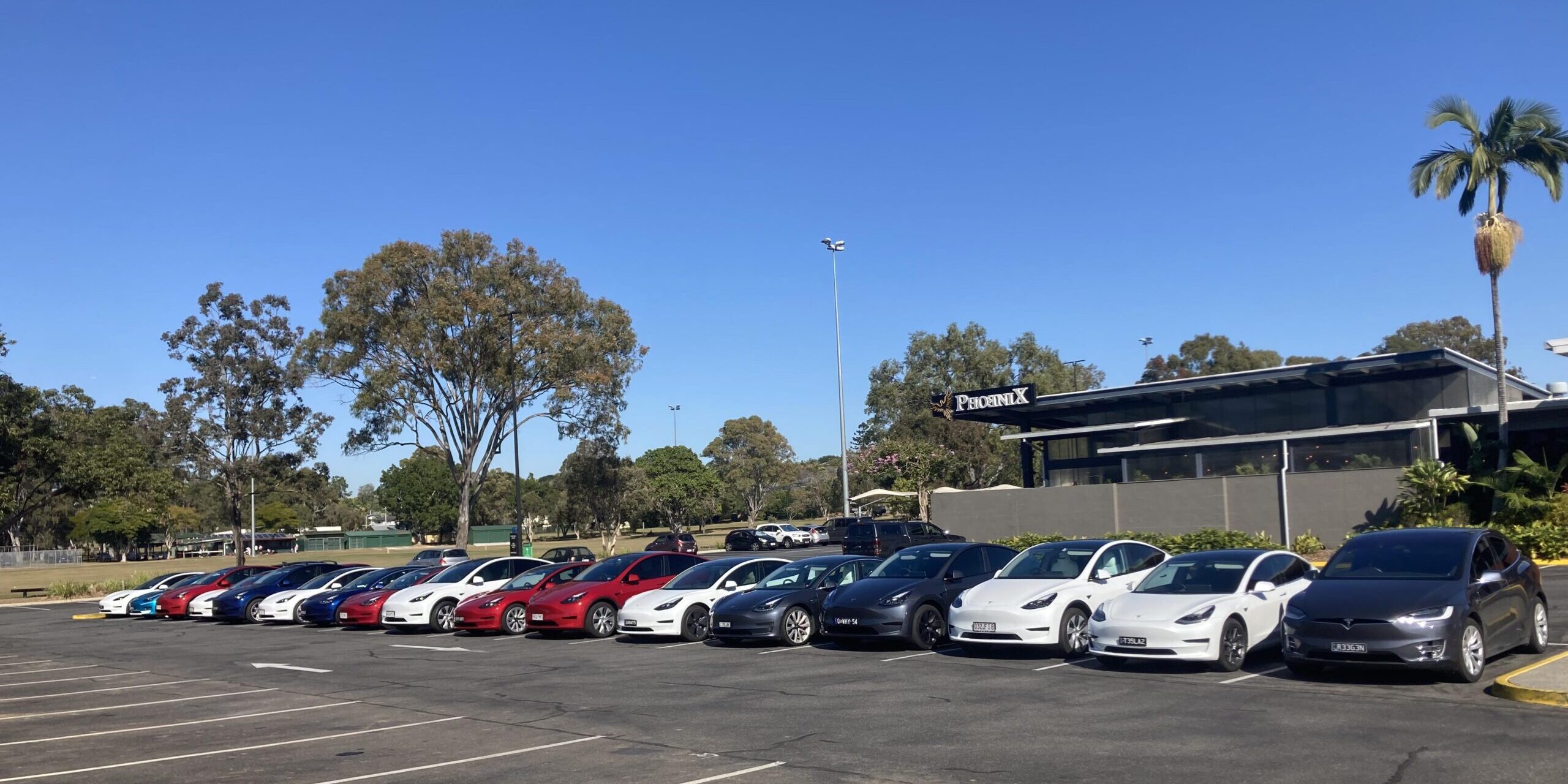
You know electric vehicles are making an impact when they feature on the national finance report on ABC News. Alan Kohler, respected finance journalist, reports that battery electric vehicle (BEV) growth in Australia is 385% higher than last year, plugin hybrids (PHEVs) are up 24%, plugless hybrids (HEVs) remain stable (though, they still have a significant share of the market — see here), petrol drivetrains have grown 7%, and diesel is down 5%. It looks like diesel is paying the price in the transition to EVs. Penetration of electric vehicles into the Australian market has hovered between 8% and 10% for the past 8 months. Approximately 100,000 vehicles are sold in Australia each month.
Although we are not seeing any attempt by the Australian media to combat the FUD they have promulgated in the past, and still do to some extent, we are seeing a surge in advertising for EVs. Watching the mainstream free-to-air TV in Australia, we are seeing ads for Cupra Born, Hyundai Kona, Hyundai Ioniq 5 and 6, GWM ORA, Kia EV6, Volvo XC30, and even Mercedes EVs. Of course, there are plenty of Toyota hybrid ads — they claim to have 25 years of experience with “electric vehicles.”
We are coming to the end of the FIFA Women’s World Cup. Every match we watch, the Hyundai and Kia EVs drive around the billboards which surround the soccer field where the Matildas recently beat Canada and France, and hopefully tonight, England. The media have discovered that there is money to be made in women’s sports and in electric vehicles.
Alan Kohler has long championed electric vehicles and gave our previous prime minister, Scott Morrison, an “F” on his EV report card. He lambasted Angus Taylor for his “Future Fuels Strategy” discussion paper, describing it as “the EV strategy you have when you don’t want an EV strategy.” The tactic was to push consumer choice and hybrids. Toyota was well pleased.
He appears pleased that the rEVolution is picking up speed. With more and more EVs on the road, motoring support groups like the Royal Automobile Club of Queensland are acknowledging their increasing existence and are stepping forward to support them — though, perhaps not as well equipped at they should be, according to Zekitek.
A recent RACQ media release states: “Electric vehicles (EVs) are fast losing their inner-city stigma, with families in South East Queensland’s outer suburbs embracing more sustainable ways to move around.” What inner city stigma? Are there still people out there who think EVs can’t go more than 10 km from the city? Our suburb of Bracken Ridge is flooded with Teslas, BYD Atto 3s, and a few Kona EVs. We are 18 km from the city centre and well out of the wealth belt.
This year alone we have participated in EV events that are as far away as Gayndah (326 km), Rockhampton (635 km), and Bundaberg (430 km). Not only are EVs not limited to the inner city, they are not limited to the capital city of Brisbane either.
The number of EVs we are seeing on a daily basis points out that the cars have the range required, prices are coming down, and there is plenty of charging. Not a day goes by without seeing a Facebook post celebrating the opening of another high-speed charger, or a bank of destination chargers.
“Over the past 12 months there’s been an influx of new electric vehicle models on the Australian market, driving down prices through competition,” Dr Kane, RACQ’s Head of Public Policy, said. “More recently we’ve seen state government rebates increased for new EV purchases, and in January 2023 the federal government brought in Fringe Benefit Tax exemptions on novated leasing for EVs. These things will continue to make EVs more affordable for motorists who want to drive cleaner and safer cars.”
Some postcode areas achieved over 300% increases in registrations of electric vehicles. This trend is expected to continue, bolstered by more investment in high-speed EV charging. RACQ is one of several entities cooperating with the state and federal governments to co-fund charging infrastructure.
“There’s no doubt range anxiety is still a big deterrent for many Queenslanders considering an EV and we must address this to ensure a smooth transition to cleaner transport,” Dr Kane said.
As well as building a new charging station at Carseldine in Brisbane, RACQ is co-funding seven new fast charging sites in Cairns, Mackay, Gladstone, Bundaberg, Hervey Bay, Toowoomba, and Mitchell with the Queensland government. Some of these sites already have fast charging — but more is always welcome. Ampol has a fast charger at Carseldine, and Toowoomba is supported by Tesla Superchargers. The charger at Mitchell will be most welcome, as it will open up the western Warrego to EVs. Having worked in Charleville, 745 km west of Brisbane, as a school teacher, it would be great to visit in the Tesla.
“The Queensland government co-funding program is set to see 46 charging sites across more than 30 mostly regional locations up and running by the end of 2024,” Dr Kane continued. “RACQ already sponsors around 50 government-owned charging stations across Queensland and will continue to work closely with the state government to ensure all motorists have access to safe, secure, and sustainable transport.”
See if you can find your suburb here.
RACQ is also doing its part to educate the public on the advantages of EVs and to dispel some of the FUD that has been circulated. In this 30 minute video, RACQ experts challenge the notion that electric vehicle batteries may explode in Australia’s hot climate or that they can’t tow your boat (Scotty doesn’t know).
They answer the typical questions, such as: How long does it take to charge an EV? What servicing is required? Can the grid cope?
They also answer some not-so-typical questions, like whether Australia will be reliant on foreign battery production the way we are on fuel supply or “which EV is most like a V6 Commodore?”
RACQ makes it clear that it is not on an EV crusade. It just wants to give the facts relevant to one’s next vehicle purchase. Much better than Rupert Murdoch’s FUD and our previous federal government’s denial.
With advertising revenue flowing to the mass media and growth statistics that are impossible to ignore by the financial sector, look forward to hearing more news on Australian TV about the progress of the rEVolution.
I don’t like paywalls. You don’t like paywalls. Who likes paywalls? Here at CleanTechnica, we implemented a limited paywall for a while, but it always felt wrong — and it was always tough to decide what we should put behind there. In theory, your most exclusive and best content goes behind a paywall. But then fewer people read it! We just don’t like paywalls, and so we’ve decided to ditch ours. Unfortunately, the media business is still a tough, cut-throat business with tiny margins. It’s a never-ending Olympic challenge to stay above water or even perhaps — gasp — grow. So …






